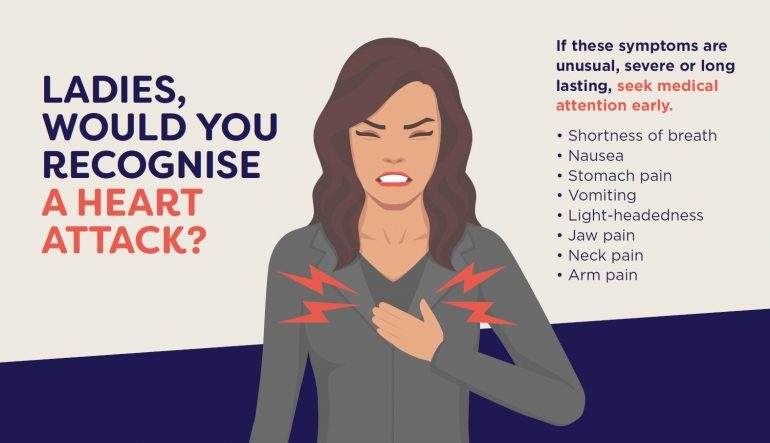Preventing sudden cardiac death (SCD) is crucial as it can strike without warning and often without a known cause. Here are five key strategies to reduce the risk and enhance heart health.
What Is Sudden Cardiac Death?
Sudden cardiac death (SCD) is a sudden, unexpected death caused by a loss of heart function (sudden cardiac arrest). It is a major public health problem, with estimates of 325,000 deaths per year in the United States alone. SCD can affect people with and without known heart disease, often occurring without warning. Therefore, prevention is essential to save lives and improve public health outcomes.
see also: 5 Typical Causes of Fatal Arrhythmias
5 Ways to Prevent Sudden Cardiac Death
1. Regular Medical Check-Ups
Early Detection of Heart Issues: Regular medical check-ups are essential in identifying and managing underlying heart conditions that could lead to SCD. Conditions such as coronary artery disease (CAD), arrhythmias, and cardiomyopathies can often be asymptomatic but may be detected through routine examinations and diagnostic tests.
Screening and Diagnostic Tests: Several tests can help identify potential heart problems early. These include:
Electrocardiogram (ECG): Measures the electrical activity of the heart and can detect arrhythmias or other abnormalities.
Echocardiogram: Uses ultrasound to visualize the heart’s structure and function.
Stress Test: Assesses how the heart performs under physical stress, often revealing hidden heart issues.
Blood Tests: Measure levels of cholesterol, triglycerides, and other markers indicative of heart disease.
Personalized Health Plans: Regular check-ups allow healthcare providers to create personalized health plans tailored to individual risk factors. These plans may include lifestyle recommendations, medications, and monitoring strategies to manage heart health effectively.
2. Adopting a Heart-Healthy Lifestyle
Balanced Diet: A diet rich in fruits, vegetables, whole grains, lean proteins, and healthy fats can significantly reduce the risk of heart disease. Key dietary components for heart health include:
Fiber: Found in fruits, vegetables, and whole grains, fiber helps reduce cholesterol levels.
Omega-3 Fatty Acids: Present in fatty fish, flaxseeds, and walnuts, omega-3s reduce inflammation and lower the risk of arrhythmias.
Antioxidants: Found in a variety of fruits and vegetables, antioxidants help protect the heart from oxidative stress and damage.
Regular Exercise: Engaging in regular physical activity is vital for maintaining heart health. The American Heart
Association recommends at least 150 minutes of moderate-intensity aerobic exercise or 75 minutes of vigorous-intensity exercise per week. Exercise helps control weight, lower blood pressure, improve cholesterol levels, and reduce stress.
Avoiding Smoking and Excessive Alcohol Consumption: Smoking is a significant risk factor for heart disease and SCD.
Quitting smoking can improve heart health almost immediately, with long-term benefits accumulating over time. Similarly, excessive alcohol consumption can lead to high blood pressure, cardiomyopathy, and arrhythmias. Limiting alcohol intake to moderate levels (up to one drink per day for women and up to two drinks per day for men) can reduce these risks.
3. Managing Stress and Mental Health
Stress Reduction Techniques: Chronic stress can negatively impact heart health by increasing blood pressure and promoting harmful behaviors like overeating and smoking. Effective stress management techniques include:
Mindfulness and Meditation: Practices that focus on being present and reducing anxiety.
Yoga: Combines physical postures, breathing exercises, and meditation to promote relaxation and reduce stress.
Deep Breathing Exercises: Simple techniques that help calm the mind and lower stress levels.
Seeking Professional Help: Mental health disorders such as depression and anxiety are linked to an increased risk of heart disease and SCD. Seeking help from a therapist or counselor, participating in support groups, and considering medication can improve mental health and reduce heart disease risk.
Work-Life Balance: Maintaining a healthy balance between work and personal life is crucial for reducing stress. Ensuring adequate rest, relaxation, and time for hobbies and family can promote overall well-being and heart health.
4. Medications and Medical Interventions
Medications for Heart Disease: For those diagnosed with heart conditions, medications can play a crucial role in managing symptoms and reducing the risk of SCD. Common medications include:
Beta-Blockers: Reduce heart rate and blood pressure, decreasing the heart’s workload.
ACE Inhibitors and ARBs: Help relax blood vessels and lower blood pressure.
Statins: Lower cholesterol levels and reduce the risk of atherosclerosis.
Implantable Cardioverter-Defibrillator (ICD): An ICD is a device implanted in patients at high risk of SCD, such as those with severe heart failure or life-threatening arrhythmias. The ICD continuously monrs the heart’s rhythm and delivers an electric shock to restore normal rhythm if a dangerous arrhythmia is detected.
Catheter Ablation: This procedure is used to treat certain types of arrhythmias that do not respond well to medication.
During catheter ablation, a thin, flexible tube is inserted into the heart, and heat or cold energy is used to destroy small areas of heart tissue causing abnormal rhythms.
5. Emergency Preparedness and Community Support
Cardiopulmonary Resuscitation (CPR) Training: Immediate response is critical during a cardiac emergency. Learning CPR can save lives by maintaining blood flow to the brain and other vital organs until professional help arrives. Community CPR training programs are widely available and highly recommended.
Automated External Defibrillators (AEDs): AEDs are portable devices that can analyze heart rhythms and deliver an electric shock to restore normal rhythm. They are easy to use and available in many public places such as schools, airports, and sports facilities. Familiarity with AEDs and their locations can improve survival rates in the event of SCD.
Creating a Heart-Safe Environment: Workplaces, schools, and community centers can implement heart-safe initiatives by providing CPR training, installing AEDs, and promoting heart health awareness. Building a supportive community environment can enhance the overall response to cardiac emergencies and save lives.
Conclusion
Sudden cardiac death is a serious and unpredictable condition, but it can often be prevented through proactive measures.
Regular medical check-ups, a heart-healthy lifestyle, stress management, appropriate medical interventions, and emergency preparedness are five key strategies to reduce the risk of SCD. By adopting these measures, individuals can take significant steps toward protecting their heart health and ensuring a longer, healthier life.

